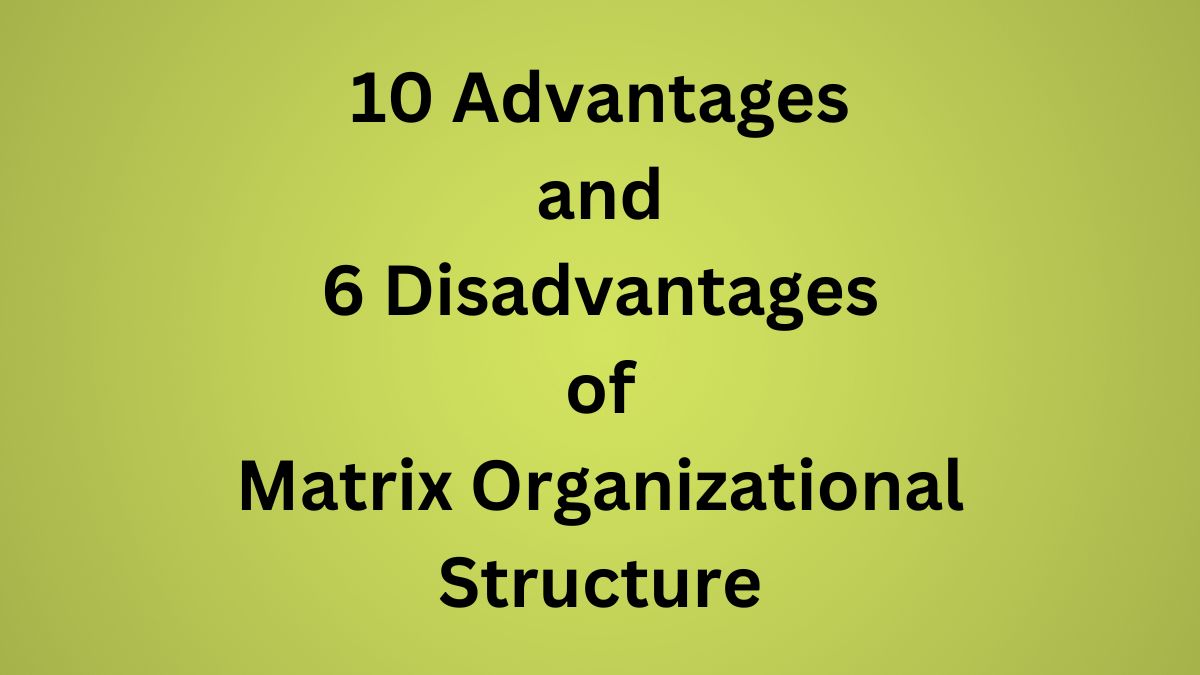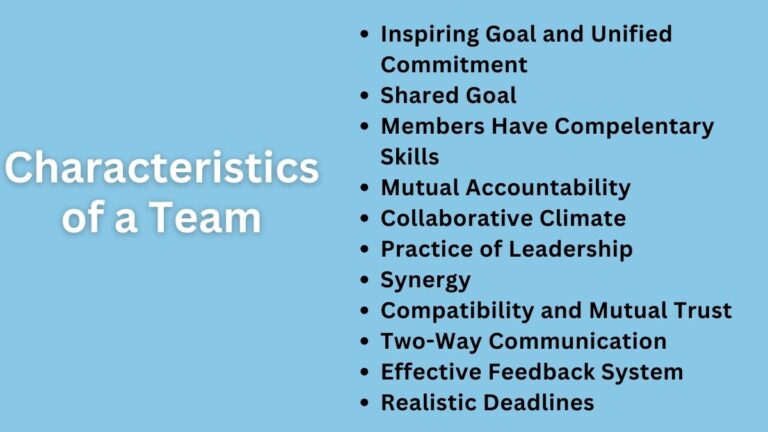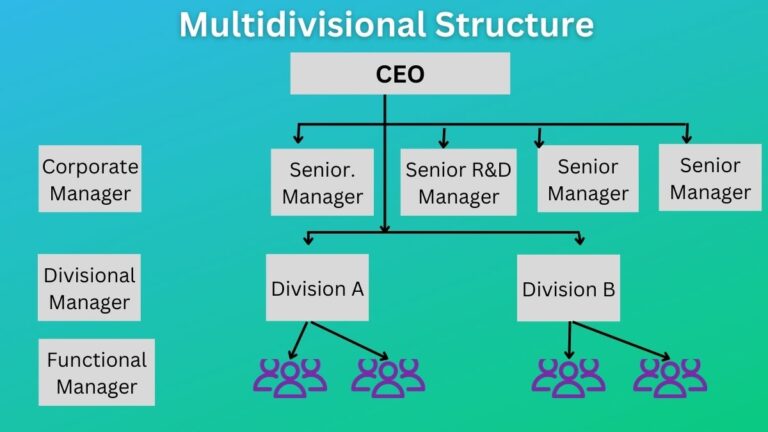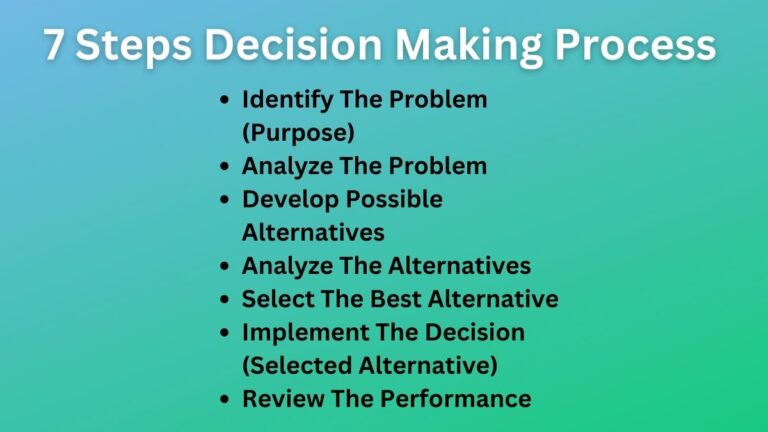10 Advantages and 6 Disadvantages of Matrix Organizational Structure
Advantages and Disadvantages of Matrix Organizational Structure
A matrix structure is a complex type of structure that combines functional and project structures in a team to ensure the achievement of specific project works or targets. The following are notable advantages and disadvantages of matrix organizational structure explained below:
Advantages of Matrix Organizational Structure
The following are the pros of matrix organizational structure:
Improved Communication
The matrix organizational structure often promotes healthy communication within the organization. Since employees of different departments come together to solve specific problems they are free to interact across the departments.
They can share valuable information and get along the way. This enhances the better collaboration and shows how well the organization is maintaining the flow of information.
Coordination and Control
In a matrix organization, the project manager has the responsibility to coordinate all the activities among the team members so that the functioning will be as expected to achieve the desired project.
Similarly, the functional manager has the responsibility to give necessary technical guidance to the projects. Both the functional and project managers maintain better and more effective coordination and control in the organization.
Knowledge and Skills Sharing
The matrix structure also ensures knowledge and skills sharing in the organization. Unlike other organizational structures, the matrix structure does not keep one talent only in one department.
Instead, it lets the talents of one department collaborate with other departments’ skills. It further improves the skills of team members.
Employee Development
Employees also get a chance to work outside of their regular job. In the course doing multiple projects, they learn new things, a new way of doing jobs, and other professional skills. This not increases employees’ skills only but also make employees feel more satisfied in their job.
Related: Miltidivisional Structure
Develops Team Spirit
In a matrix organization, both the project manager’s subordinates and the functional manager’s subordinates work together to achieve common projects or objectives.
The common project necessitates the importance of teamwork. Both project and functional managers have to work together as a team. This environment helps to develop team spirit in the organization’s operations.
Flexible And Dynamic
The matrix organization is flexible and dynamic in nature. It is designed to be responsive to changing business environments. Project managers have functional independence they can make relevant decisions according to the situation.
Maximum Use of Resources
Many projects are conducted continuously in these organizational structures. As a result, it is more likely that additional resources, including labor, will be used. The expertise of staff members and other resources from a project that has been finished is frequently applied to new projects.
Similarly, leftover materials, plants, equipment, and other resources from finished projects can be moved to the new project, minimizing the additional expense of hiring new employees. As a result, the business frequently makes use of its available resources, minimizing resource waste.
Relief to Top Manager
The top manager has sufficient time to look at more strategic activities of the organization. He has given the necessary authority to project managers to handle the routine and regular tasks that come with the process of project completion. It gives more free time to the manager and he can more creatively think about future aspects of the firm.
Related: Levels of Management
Specialization
The matrix organization also ensures the benefits of functional specialization in the organization. Project managers are given the task of smoothly and successfully completing the projects. Whereas, functional managers are assigned only to give necessary guidance and technical assistance during the project completion.
Improved Efficiency
It also results in higher efficiency in organizational operations. The improved communication, specialization, enhanced employee skills, team spirit, and optimum use of resources all add up to greater efficiency.
Disadvantages of Matrix Organizational Structure
Despite many advantages, the following are the main disadvantages of the matrix structure:
Lack of Unity of Command
Let’s first understand what the unity of command is. The unity of command is the provision that states an employee should be receiving the command from and working under only one boss at a time.
However, the matrix structure violates this unity of command principle. Under this organizational structure, an employee has to work under two bosses i.e. managers (functional and project) at a time.
Increased Workloads
The matrix structure also increases the workload of employees. As in this structure, the employees are added to new projects without being removed from their regular work, they feel overburdened.
Difficult to Balance
The matrix organizational system requires a high level of communication and interpersonal skills. Both functional and project specialists must be involved.
Additionally, maintaining balance among these authorities is crucial for ensuring consistency in organizational performance. Maintaining a balance between these authorities in the real world is more difficult, particularly if they have a negative attitude toward one another.
As a result, the top management must devote more time and energy to preserving a mutually beneficial relationship between the project and functional specialists.
Expensive Structure
The matrix structure is a costly organizational structure. The management has to invest more time and money in the project and functional specialists. If the work is regular, the cost is in balance but when there are no projects to do at such a time the management has to keep those specialists even if there is no work.
As such keeping them requires management to invest more money. This results in more administrative costs, thus, this structure is not fit for small and low-capital organizations.
Chances of Conflict
In a diverse workforce, the chances of conflict are common. As the matrix structure invites employees from different functional disciplines they certainly differ in their backgrounds, talents, skills, attitudes, and so on. These differences typically increase the chances of conflict during the project completion.
Takes Time To Be Effective
Employees take time to adjust to this matrix structure at first and get used to handling many roles at once. They are habituated to performing routine tasks in functional areas, but not those involving projects. As a result, they take the necessary time to work successfully on both their usual tasks and new projects.
Read Next: Line and Staff Organizational Structure
Sajan Kushmi is a content writer with more than 4 years of experience. He holds BIM Degree. He write on the topics related to Management, Marketing, and Entrepreneurship.






